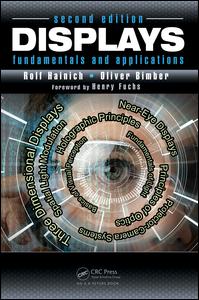

Most ebook files are in PDF format, so you can easily read them using various software such as Foxit Reader or directly on the Google Chrome browser.
Some ebook files are released by publishers in other formats such as .awz, .mobi, .epub, .fb2, etc. You may need to install specific software to read these formats on mobile/PC, such as Calibre.
Please read the tutorial at this link. https://ebooknice.com/page/post?id=faq
We offer FREE conversion to the popular formats you request; however, this may take some time. Therefore, right after payment, please email us, and we will try to provide the service as quickly as possible.
For some exceptional file formats or broken links (if any), please refrain from opening any disputes. Instead, email us first, and we will try to assist within a maximum of 6 hours.
EbookNice Team

Status:
Available0.0
0 reviewsIn the extensive fields of optics, holography and virtual reality, technology continues to evolve. Displays: Fundamentals and Applications, Second Edition addressesthese updates and discusses how real-time computer graphics and vision enable the application and displays of graphical 2D and 3D content.
This book explores in detail these technological developments, as well as the shifting techniques behind projection displays, projector-camera systems, stereoscopic and autostereoscopic displays. This new edition contains many updates and additions reflecting the changes in fast developing areas such as holography and near-eye displays for Augmented and Virtual reality applications.
Perfect for the student looking to sharpen their developing skill or the master refining their technique, Rolf Hainich and Oliver Bimber help the reader understand the basics of optics, light modulation, visual perception, display technologies, and computer-generated holography. With almost 500 illustrations Displays will help the reader see the field of augmentation and virtual reality display with new eyes.
Features:
• Covers physics, technology and techniques behind flat-panel as well as projection displays, projector-camera systems, stereoscopic and autostereoscopic displays, computer-generated holography, and near-eye displays
• Discusses how real-time computer graphics and computer vision enable the visualization of graphical 2D and 3D content
• Augmented by close to 500 rich illustrations, which give readers a clear understanding of existing and emerging display technology